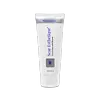What's inside
What's inside
 Key Ingredients
Key Ingredients

 Benefits
Benefits

 Concerns
Concerns

 Ingredients Side-by-side
Ingredients Side-by-side

Water
Skin ConditioningDimethicone
EmollientPalmitoyl Oligopeptide
CleansingPalmitoyl Tetrapeptide-7
Skin ConditioningSaccharomyces Lysate
Skin ConditioningArnica Montana Flower Extract
MaskingAllium Cepa Bulb Extract
Skin ConditioningCaprylic/Capric Triglyceride
MaskingCetyl Palmitate
EmollientGlycerin
HumectantCeteareth-20
CleansingCetyl Alcohol
EmollientAscorbyl Palmitate
AntioxidantSqualane
EmollientRetinyl Palmitate
Skin ConditioningPinus Pinaster Bark Extract
AntioxidantButyrospermum Parkii Butter
Skin ConditioningBeta-Carotene
Skin ConditioningUbiquinone
AntioxidantCopper Gluconate
Skin ConditioningGlucosamine
Laminaria Saccharina Extract
Skin ProtectingVitis Vinifera Seed Extract
AntimicrobialAllantoin
Skin ConditioningLaminaria Japonica Extract
Skin ProtectingBisabolol
MaskingChitosan
Calendula Officinalis Flower Extract
MaskingSodium Hyaluronate
HumectantPhospholipids
Skin ConditioningMethylparaben
PreservativeSteareth-2
EmulsifyingPhytosphingosine
Skin ConditioningWater, Dimethicone, Palmitoyl Oligopeptide, Palmitoyl Tetrapeptide-7, Saccharomyces Lysate, Arnica Montana Flower Extract, Allium Cepa Bulb Extract, Caprylic/Capric Triglyceride, Cetyl Palmitate, Glycerin, Ceteareth-20, Cetyl Alcohol, Ascorbyl Palmitate, Squalane, Retinyl Palmitate, Pinus Pinaster Bark Extract, Butyrospermum Parkii Butter, Beta-Carotene, Ubiquinone, Copper Gluconate, Glucosamine, Laminaria Saccharina Extract, Vitis Vinifera Seed Extract, Allantoin, Laminaria Japonica Extract, Bisabolol, Chitosan, Calendula Officinalis Flower Extract, Sodium Hyaluronate, Phospholipids, Methylparaben, Steareth-2, Phytosphingosine
Alternatives
Ingredients Explained
These ingredients are found in both products.
Ingredients higher up in an ingredient list are typically present in a larger amount.
Dimethicone is a type of synthetic silicone created from natural materials such as quartz.
What it does:
Dimethicone comes in different viscosities:
Depending on the viscosity, dimethicone has different properties.
Ingredients lists don't always show which type is used, so we recommend reaching out to the brand if you have questions about the viscosity.
This ingredient is unlikely to cause irritation because it does not get absorbed into skin. However, people with silicone allergies should be careful about using this ingredient.
Note: Dimethicone may contribute to pilling. This is because it is not oil or water soluble, so pilling may occur when layered with products. When mixed with heavy oils in a formula, the outcome is also quite greasy.
Learn more about DimethiconeGlycerin is already naturally found in your skin. It helps moisturize and protect your skin.
A study from 2016 found glycerin to be more effective as a humectant than AHAs and hyaluronic acid.
As a humectant, it helps the skin stay hydrated by pulling moisture to your skin. The low molecular weight of glycerin allows it to pull moisture into the deeper layers of your skin.
Hydrated skin improves your skin barrier; Your skin barrier helps protect against irritants and bacteria.
Glycerin has also been found to have antimicrobial and antiviral properties. Due to these properties, glycerin is often used in wound and burn treatments.
In cosmetics, glycerin is usually derived from plants such as soybean or palm. However, it can also be sourced from animals, such as tallow or animal fat.
This ingredient is organic, colorless, odorless, and non-toxic.
Glycerin is the name for this ingredient in American English. British English uses Glycerol/Glycerine.
Learn more about GlycerinRetinyl palmitate is a form of retinoid. Retinoids are the superstar class of anti-aging ingredients that include tretinoin and retinol.
This particular ingredient has had a bumpy year with its rise and fall in popularity.
First, Retinyl palmitate is created from palmitic acid and retinol. It is a retinol ester and considered one of the weaker forms of retinoid.
This is because all retinoids have to be converted to Tretinoin, AKA retinoic acid. Retinyl Palmitate is pretty far down the line and has to go through multiple conversions before its effects are seen.
Due to this long and ineffective conversion line, the benefits of Retinyl Palmitate are debated.
Studies show Retinyl Palmitate to help:
Dermatologists say this ingredient is ineffective because it isn't used in high enough concentrations in cosmetics.
This ingredient used to be found in sunscreens to boost the efficacy of sunscreen filters.
The downfall of Retinyl Palmitate was due to released reports about the ingredient being correlated to sun damage and skin tumors.
While there is a study showing this ingredient to cause DNA damage when exposed to UV-A, there is no concrete proof of it being linked to skin cancer. It is safe to use when used correctly.
All retinoids increase your skin's sensitivity to the sun in the first few months of usage. Be especially careful with reapplying sunscreen when using any form of retinoid.
Currently, this ingredient is still allowed in cosmetics all over the world. In Canada, cosmetics must have a warning label stating the product to contain Retinyl Palmitate
Fun fact: This ingredient is often added to low-fat milk to increase the levels of Vitamin A.
Learn more about Retinyl PalmitateUbiquinone (Coenzyme Q10) is a molecule already found in our bodies. It is a potent antioxidant and skin-soothing ingredient.
Aging and environmental exposure diminishes our skin's natural ubiquinone levels. This is much like our natural collagen and elastin.
The good news is: studies show applying this ingredient topically replenishes ubiquinone levels in our skin. This also comes with a ton of skin benefits. These benefits include:
Ubiquinone is considered a large molecule and cannot be absorbed into the lower layers of skin. This is why it is believed to be such an effective antioxidant: it protects our skin in the upper layers and prevents damage in the deeper layers.
When used in sunscreen, ubiquinone is shown to increase ingredient stability, increase SPF factor, and add to infrared protection.
Fun fact: ubiquinone is fat-soluble.
Learn more about Ubiquinone